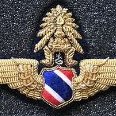Thai airline flight makes emergency landing in Phuket
-
Recently Browsing 0 members
- No registered users viewing this page.
-
Topics
-
-
Popular Contributors
-
-
Latest posts...
-
45
Report Dutch Embassy Sale Sparks Debate in Bangkok
Er, no, that is not an anachronism. -
85
Health Thailand Battles Covid Surge with 12,000 Cases in a Single Day
Would you mind expanding a little on that? Did you suffer adverse events, or do you have a reason to be wary? It is my understanding that these vaccines are safe and effective, and that smart, educated people follow the science and choose inoculation. -
127
Almost can't stand all that Trump winning on his B Day.
Enjoy it-There is more to come!! -
76,713
-
2
Sat me at a Bar on Soi 6… Then This Nonsense Started
"LOL"-Great Narratives! -
28
Accident Drunk Father Crashes Motorcycle, 14-Month-Old Daughter Killed by Oncoming Pickup
Unsubstantiated conjecture that adds nothing beyond racist undertones 100%... the licensing is almost irrelevant given the standards involved with obtaining a lincense... A 'card' over here doesn't mean the holder has had any decent level of driver or rider training, or education rendering it the card itself rather useless as a tool for ensuring road standards and safety... With or without a Thai Motorcycle license the fecklessness of such actives to cause this tragic loss will continue - the rider was drunk !!! Some may consider that racist, but IMO - its simply recognition of the poor training and licensing standards here and that impacts any 'race' or rides or drives here.- 1
-

-
-
Popular in The Pub



.thumb.jpeg.d2d19a66404642fd9ff62d6262fd153e.jpeg)






Recommended Posts
Create an account or sign in to comment
You need to be a member in order to leave a comment
Create an account
Sign up for a new account in our community. It's easy!
Register a new accountSign in
Already have an account? Sign in here.
Sign In Now